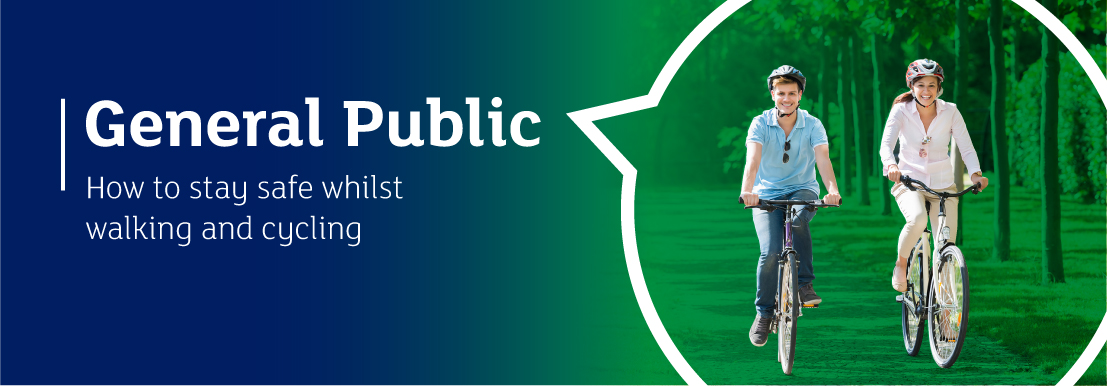
General information on walking and cycling
This section provides information to support people to walk and cycle more, including:
What are the key facts about walking, wheeling and cycling?
The following are key facts and figures around walking and cycling which we hope will help provide you with information to support you to walk
and cycle more.
General facts - walking and cycling
-
Transport emissions account for 24 per cent of UK greenhouse gas emissions in 2020. Walking and cycling do not create greenhouse gases and can help reduce our transport impact1
-
Walking, cycling or wheeling one mile a week, instead of driving, will save 26 kg of carbon dioxide a year, per person2
-
A person who is active every day reduces the risk of contracting type 2 diabetes, depression, coronary heart disease, Alzheimer’s disease, hip fracture, breast cancer and colon cancer3
-
Walking and cycling provide more social opportunities than driving4, reducing loneliness and improving mental health
-
An active lifestyle, such as regular cycling or walking, can improve wellbeing by 32 per cent. 5
Cycling facts
-
In England, men make over three times more cycling trips and travel four times the distance than females. The average annual cycling distance for men is 89 miles per year and 22 for women6
-
The health benefits of cycling outweigh the negative impacts of being exposed to more air pollution7
-
People who cycle in cities have better mental health, and feel less stressed and lonely8 than those who travel by car or public transportation
-
Moderate pedal-pushing burns up to 500 calories per hour, and a 20-minute bike ride to work could burn the same amount of calories as a cappuccino or a bar of chocolate or a 175ml glass of wine.9
Walking facts
-
In the UK, the average person walks about 3,000 to 4,000 steps per day10, which is the equivalent of walking 566 miles - from London to Newcastle and back again, in a year
-
Walking can improve cardiovascular fitness, strengthen bones and reduce the risk of developing conditions such as obesity, type 2 diabetes and high blood pressure11
-
People who walk to work have a lower risk of developing mental health conditions such as depression and anxiety12
-
Walking to work or running errands instead of driving can also reduce air pollution13, exposure to air pollution14 and the risk of traffic accidents15
-
A 68 kg adult walking at 3 mph will burn up to 240 calories per hour16, the equivalent of a Mars bar.
What are the benefits and risks of cycling and walking?
Walking and cycling are popular forms of transportation and physical activity in many countries, including the UK, that offer numerous benefits for both individuals and society. However, there are also some risks associated with these activities that should be considered. We want to share these benefits and risks with you, to encourage safer walking and cycling:
Physical and mental health benefits
One of the main benefits of walking and cycling in the UK is their ability to improve physical health. Regular physical activity is essential for maintaining good health, and both walking and cycling are easy and accessible ways to incorporate exercise into daily life. According to the World Health Organization, regular physical activity can reduce the risk of chronic diseases such as obesity, heart disease and type 2 diabetes, as well as improve mental health and wellbeing. In fact, NHS research has shown that even low levels of physical activity, such as walking or cycling for just 30 minutes a day, can have
significant health benefits.
Environmental and air pollution benefits:
Another benefit of walking and cycling in the UK is their potential to reduce air pollution and carbon emissions. Transportation is a major contributor to air pollution and greenhouse gas emissions in the UK, but walking and cycling do not produce any emissions. By choosing to walk or cycle instead of driving, individuals can help reduce the amount of air pollution and greenhouse gases in the environment. This can have both short-term and long-term benefits for public health and the fight against climate change.
Economic benefits:
In addition to their health and environmental benefits, walking and cycling can also save individuals money on transportation costs such as gasoline, car maintenance and public transportation fares. According to the Cyclescheme, cycling can save individuals almost £2,900 per year on annual car costs. Walking is generally a free form of transportation, and even the costs of purchasing and maintaining walking equipment, such as shoes and a backpack, are typically lower than those for a car.
Social benefits:
Finally, walking and cycling can also promote social interaction and help build a sense of community, providing opportunities for people to connect with their neighbours and engage in physical activity together. In addition, the creation of dedicated walking and cycling paths and infrastructure can encourage the use of these modes of transportation and help foster a sense of community among users.
While there are many benefits to walking and cycling in the UK, it is important to be aware of the risks as well.
Risks of walking and cycling:
One of the main risks is accidents and injuries. According to the Department for Transport (DfT), there were over 16,000 pedestrian casualties and over 16,000 cyclist casualties in road accidents in the UK in 2021. To reduce the risk of accidents and injuries, it is important for individuals to take safety precautions when walking or cycling, such as wearing a helmet, using appropriate lighting and reflective clothing at night, and following traffic laws.
Walking and cycling are popular forms of transportation and physical activity in the UK that offer numerous benefits for both individuals and society. These activities can improve physical health, reduce air pollution and carbon emissions, save money, and promote social interaction. However, it is important to be aware of the risks associated with walking and cycling and to take appropriate safety precautions.
Which bike is right for me?
Choosing a bike that’s right for you is very important. The first question you should ask yourself is, “where and why am I planning to cycle?” as this will affect which bike you should buy. For instance, if you plan on only commuting short distances, you will want a different bike to one designed for longer distances and leisure rides. The table below outlines the different types of bikes adults can purchase and what they are recommended for:
Type of bike
|
Example
|
Description
|
What can they be used for
|
|
Road bikes
|
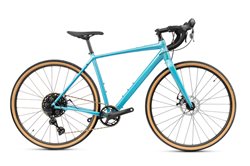
|
Road bikes are built for speed and distance, and are designed for riding on roads. The bikes have lightweight frames, thin tyres, and drop handlebars. Can be used for commute if the route is straight and smooth
|
Road bikes can be used for the commute if the route is straight and smooth. They can be ridden off-road as long as the trail is smooth and not rutted or stony
|
|
Mountain bikes
|
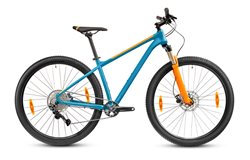
|
A mountain bike has a sturdy frame, knobby tyres, and suspension to absorb shock while riding off-road. This bike is designed to be used for steep trails and works best off-road
|
It’s possible to use a mountain bike for commuting or on the road, but they are not as efficient for bikes designed to be used on the road
|
|
Hybrid bikes
|
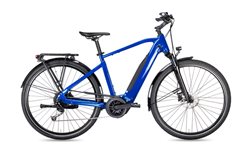
|
The hybrid bike combines the benefits of both road bikes and mountain bikes. It is excellent for riding on different types of surfaces. Compared to road bikes, they have wider tyres and are more comfortable to ride
|
These are good bikes for commuters, and can also be used for road cycling and be used for cycling on forest trails and paths, but not on steeper mountain biking paths
|
|
Folding bikes
|
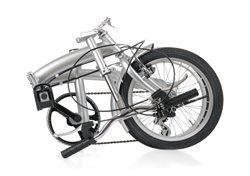
|
Folding bikes have been designed to be easily stored and for taking on public transport as part of a chain journey. Great for commuting, if the commute involves a train journey. This bike is not suitable for longer journeys
|
These are only good for short commutes on the road. They are not designed to be used on trails or off-road
|
|
E-bikes
|
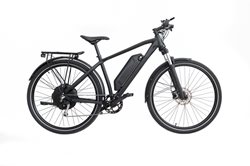
|
Electric bikes (e-bikes) have a motor that provides assistance when pedalling, making them easier to ride uphill and for longer distances.
Further information on e-bikes can be found in the e-bike section following this table
|
E-bikes can be folding bikes and hybrid commuter bikes, as well as off-road bikes. So, the type of e-bike will influence what it can be used for
|
|
Fixie bikes
|
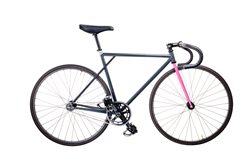
|
Also known as "fixed gear" bikes because they have only one gear and no freewheel, so their pedals are always in motion. In urban areas, they are popular because of their simplicity.
|
Fixie bikes can work well where the cycle route is flat, but not so great for hills, so mainly suitable for flat areas including urban areas
|
|
Dutch style bikes
|
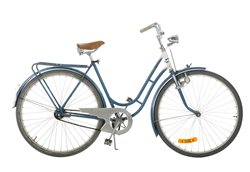
|
Known for its sturdy frame, upright riding position, and ability to carry heavy loads, Dutch-style bikes are often equipped with features such as a chain guard, kickstand, and internal gears, which make them practical and easy to use for everyday transportation.
|
Dutch-style bikes are designed to be used on flat routes and can be used for a commute, but are not designed for longer or off-road cycling
|
Please note: While we hope the above advice will help you start choosing the right bike for you, we would always advise visiting a bike shop, to get expert advice and to help with sizing the right bike for you.
Which e-bike is right for me?
Electric bikes are bicycles with electric motors that assist in pedalling. By using the control panel on the handlebar, the rider can adjust the level of assistance the motor provides. As the rider pedals, the motor adds power to the pedals. As a result, riding the bike becomes more manageable, especially when going uphill or on long trips. E-bikes are excellent for people who have difficulty pedalling a traditional bike or want to ride longer distances.
An e-bike motor is usually located in one of the wheels' hubs or in the bottom bracket (the part of the frame where the pedals attach to). A throttle on some e-bikes often controls the motor assistance, so the rider does not have to pedal.
In urban areas and for recreational riding, e-bikes are becoming increasingly popular as an alternative to cars. E-bikes are environmentally friendly and are a convenient alternative to cars, providing a more efficient way to cycle for longer journeys.
We have created the following to provide information about e-bikes:
-
A general ‘E-bike factsheet’, which covers how e-bikes work and the benefits and risks of e-bikes
-
A set of three ‘Electric Bike films’ that provide information on choosing an e-bike, using an e-bike, and training to use e-bikes
-
An accompanying guide to e-bike films, the ‘Electric Bike series' guide, which provides information on choosing, using and training for e-bikes.
What equipment do I need for cycling?
It is important to take safety precautions to reduce the risk of injury when cycling. One way to do this is by using proper cycling equipment, such as a helmet, lights and reflective clothing. There are also other pieces of cycling equipment that can help to improve your safety and comfort while riding. For example, gloves can help to protect your hands in the event of a fall, while padded shorts can help to make longer rides more comfortable. More information on the different kinds of equipment can be found below:
Helmets
A properly fitting helmet is essential to protect your head in the event of a fall or collision. This is probably the most important piece of equipment you can have for safe cycling. According to the Bicycle Helmet Safety Institute, a properly fitting helmet can reduce the risk of head injury by as much as 85 per cent. According to the DfT, 73 per cent of adult cyclists and 84 per cent of child cyclists in the UK always wear a helmet. We have created a ‘Cycle Helmets factsheet’ which provides further information about bike helmets.
Lights and reflectors
Lights are important for visibility, especially when cycling at night or in low light conditions. According to the Highway Code, your bike must be fitted with white front and red rear lights, as well as a red rear reflector and amber pedal reflectors (for bikes manufactured since October 1985). By using white reflectors on the front and spoke reflectors on the back of your bike, you can be sure that drivers will see you.
Hi-vis and fluorescent clothing
Reflective clothing is important for visibility, especially when cycling at night or in low light conditions. Reflective clothing can help to reflect light from car headlights, making you more visible to drivers. Hi-vis clothing is great at reflecting light, such as from a car headlight, whereas fluorescent clothing uses a special dye which gives it a bright, glowing appearance in low light conditions. For cycling in low light and at night, a study showed that orange/red fluorescent clothing is the best colour to wear at night to be seen by other road users.
Cleats
Cycling cleats are metal or plastic wedges which clip shoes to bicycle pedals. These are optional and are typically used for certain types of cycling, such as road cycling, mountain biking and indoor cycling to improve power transfer and efficiency. In order to use cleats, special cleat shoes are needed, as well as cleat pedals, which need to be attached to your bike, replacing the standard pedals. We have created a ‘Cycle Cleats factsheet’ providing lots of information on the different types of cleats and the benefits and risks of using them.
Panniers
Panniers are attachable bags or baskets used to carry items at the front or back of bikes. They are popular with commuters and touring cyclists who need to carry items with them when they are riding, such as shopping, a computer or a change of clothes. Panniers provide many benefits, including increased carrying capacity, better weight distribution and improved comfort.
Resources

Electric Bikes Factsheet

Electric Bikes Series

Electric Bikes Films

Cycle Helmets Factsheet

Cleats Factsheet
References
1 Transport and Environment statistics, DfT
2 Walk to School Week: the benefits of active travel, Energy Saving Trust
3 Physical Activity Guidelines, DHSC
4 The relationship between transport and loneliness, Sustrans
5 Eudaimonia: How do humans flourish? YMCA
6 Walking and cycling statistics 2021, DfT
7 Walking and cycling in cities is good for health, Imperial College London
8 Cycling is the healthiest way to get around cities, Imperial College London
9 Health benefits of cycling and walking. Sustrans
10 Ways to increase your daily steps and keep fit, CABA
11 Walking for Health. NHS
12 Effects of exercise on anxiety, depression and mood. Guszkowska, M, Psychiatria polska, 2004
13 Cycling and walking can help reduce physical inactivity and air pollution, WHO
14 Personal air pollution exposure, Panchal R. et al (2022). Journal of Transport and Health
15 Safety in numbers: more walkers and bicyclists, safer walking and bicycling. British Medical Journal
16 Calories burned walking. Healthline.com